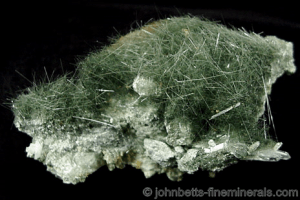Asbestos: What is it? Is it really that dangerous? Why do I always hear about asbestos and mesothelioma on the television? Below you will find the answers to all of your questions regarding asbestos, how it can affect the health of you and your loved ones and how you can reduce your exposure to asbestos fibers during activities such as construction or demolition.
History of Asbestos

The miracle-like properties of asbestos have been exploited for thousands of years now as it is a naturally-occurring mineral. It has been used since ancient times: Greeks used it in wicks for their eternal flames; Egyptians made garments for embalmed pharaohs with woven asbestos fibers; Romans used it in tablecloths and napkins, actually cleaning the items by throwing them into fire. The use of the mineral in modern times, however, really started in the 1800s with the Industrial Revolution. Most of it was used in the railroad, ship-building and automobile industries as insulation or in brakes and clutches (materials involved with friction). At one time, prior to the 1970s, asbestos was mandated for use in every branch of the United States military.
The mineral can be found all around the world, but today, it is mostly mined in Canada and South Africa. The word “asbestos” is believed to come from the Greek word sasbestos which means “inextinguishable” or “unquenchable.” As this material literally doesn’t burn, it certainly seems “inextinguishable” and extremely beneficial to mankind, with several other positive attributes as well.
Properties of Asbestos

The Environmental Protection Agency (EPA) recognizes six different types of asbestos within the serpentine and amphibole mineral families.
- Chrysotile (white asbestos) — Being the most common and widely used type, it can be found in roofing materials, ceilings, walls and floors. Previously, it was used in brake linings of cars, pipe insulation and boiler materials, including seals. It is the only type in the serpentine family. In many countries, the other types have been banned, but white asbestos is still permitted under “controlled use.” The fibers are curly (the defining characteristic of serpentine minerals) and comprised of sheets of crystals.
- Amosite (brown asbestos) — This type is part of the amphibole family of minerals, different from chrysotile. Amphiboles are straight, thin, needle-like fibers that are not as flexible as chrysotile types. It is the second most commonly used type in the United States. Materials containing amosite are cement sheets, plumbing/chemical/electrical insulation, tiles for roofs and floors, gaskets, etc.
- Crocidolite (blue asbestos) — Crocidolite fibers are super thin — the diameter of a strand of hair — and is the easiest to inhale, causing more deaths than the other types due to the thinness of the fibers. It also breaks down much quicker than the other types contributing to its hazardous nature and is less heat resistant. Amazingly, the fibers can bend beyond 90 degrees before breaking. Products that can contain crocidolite include spray-on insulation, cement sheets, water encasement, electrical/telecommunication wires, etc.
- Tremolite — This type can be spun and woven into cloth. Products include paints, sealants, plumbing materials, insulation, etc.
- Anthophyllite — Anthophyllite is less hazardous than the types previously mentioned, but is also the rarest and least commercially mined than the others. However, it has been used in products containing either vermiculite or talc, including talcum powder.
- Actinolite — This mineral’s name comes from the Greek word aktinos which means “ray” or “beam” as it’s fibers radiate out from the mineral ore. It has usually been used alongside vermiculite with the combination creating a lightweight insulation material. Other products include structural fire-proofing, concrete materials and other products previously made before asbestos was found to be hazardous including paints, sealants, drywall, children’s toys and joint compounds.

Essentially, all the different types of this mineral are known to be fire-resistant, great insulators, chemically inert and strong, perfect for construction uses. However, it isn’t quite the “miracle-mineral” it was touted as years ago.
Health Issues Arising from Asbestos
Health problems associated with asbestos use has been noted since ancient times. Both the Greeks and Romans took notice of a “sickness of the lungs” in the slaves who wove the fibers into cloth. Pliny the Elder, a Roman author, wrote of the “disease of the slaves”: the slaves would actually use a thin membrane from the bladder of a goat or lamb as a respirator in order to continue their work and the asbestos miners were dying much earlier than other slaves. Despite these early warning signs from ancient times, the commercial use of the mineral skyrocketed in the 1800s and, in turn, the prevalence of lung diseases within the population associated with the mineral.
Diseases From Exposure to Fibers
The main lung diseases that arise from working with the fibrous mineral or being exposed to its fibers directly include:
- Lung cancer
- Mesothelioma — a rare cancer that develops in the thin lining of the lungs, abdomen, chest and/or heart
- Asbestosis — a progressive, long-term, chronic lung disease that is not cancer
- Pleural Disorders — pleural plaques, thickening and increased collection of fluids between the membranes of the lungs

Just touching asbestos will not harm you, but being in an enclosed space with fibers floating in the atmosphere opens up the potential of inhalation of the fibers which can remain airborne for hours. These fibers become lodged in the membranes of our lungs and cannot be broken down by the body. The fibers will accumulate in the lungs causing scarring and inflammation. Symptoms of heavy exposure do not show up right away — as late as 10 to 50 years after the exposure. It is estimated that one-third of all mesothelioma victims are military veterans and it’s also estimated that at least 10,000 people in the United States die each year from asbestos related illnesses.
How Are You Exposed?
The main source of exposure is through working as an asbestos miner and directly with the material, such as tainted insulation or drywall, either during manufacturing or renovation/demolition activities. Usually only people exposed to the fibers on a regular basis end up with one of the diseases. Once asbestos has been incorporated into a material, such as drywall, there is minimal risk to exposure when the material is intact. However, once that material is damaged or disturbed in any way that exposes the fibers, such as sanding, drilling or cutting, the fibers are free to become airborne and inhaled. Therefore, it is imperative that anyone working in the construction/renovation/demolition industry be aware of the risks and work carefully around suspect Asbestos Containing Materials (ACM).
Both the Occupational Safety and Health Administration (OSHA) and the EPA, per the Asbestos Hazard Emergency Response Act (AHERA), require that employees receive the appropriate training if they regularly come in contact with ACM. Educational agencies are also required to inspect their school buildings for ACM and prepare management plans when necessary.
Asbestos Training Classes by Karl Environmental Group
Fortunately, Karl Environmental makes it easy for you by providing these mandated training classes approved by both agencies including Asbestos Supervisor (refresher), Asbestos Worker (refresher) and Asbestos Awareness. Our company is also composed of licensed Asbestos Building Inspectors, Project Designers, Contractors and Management Planners. Therefore, we are trained to properly test for and perform surveys on a property, including schools. Our professionals have years of experience performing AHERA services for schools in the states of Pennsylvania and New Jersey. A testing survey is certainly recommended prior to any construction, renovation or demolition activities, reducing environmental liability and health risks. Our remediation division is also composed of licensed Asbestos Supervisors and Workers who are capable of performing efficient abatement activities of all sizes.
Please do not hesitate to call to schedule a training class, a testing survey performed on a property or an abatement project. Our qualifications and experience ensure a smooth and stress-free project completion.

